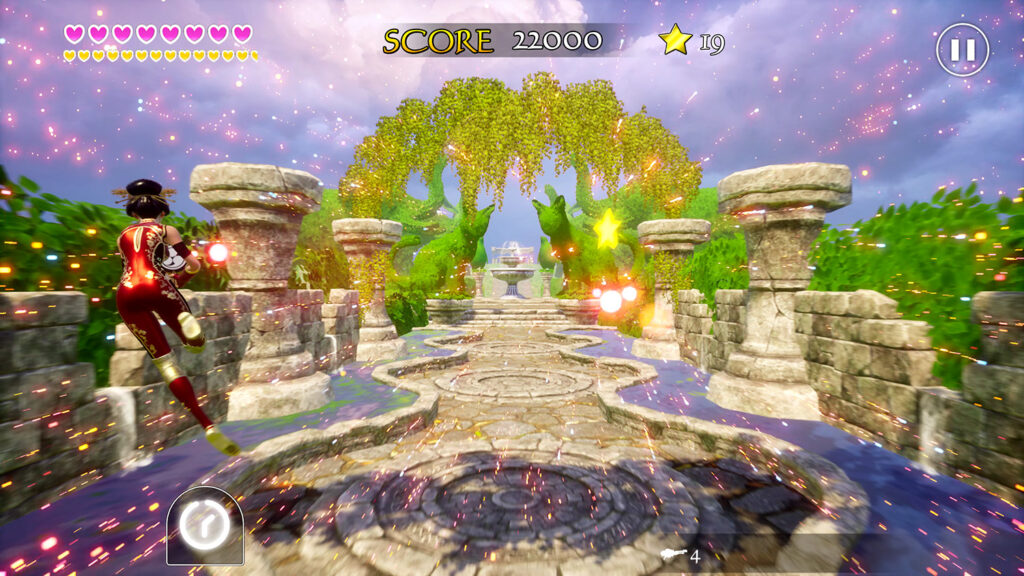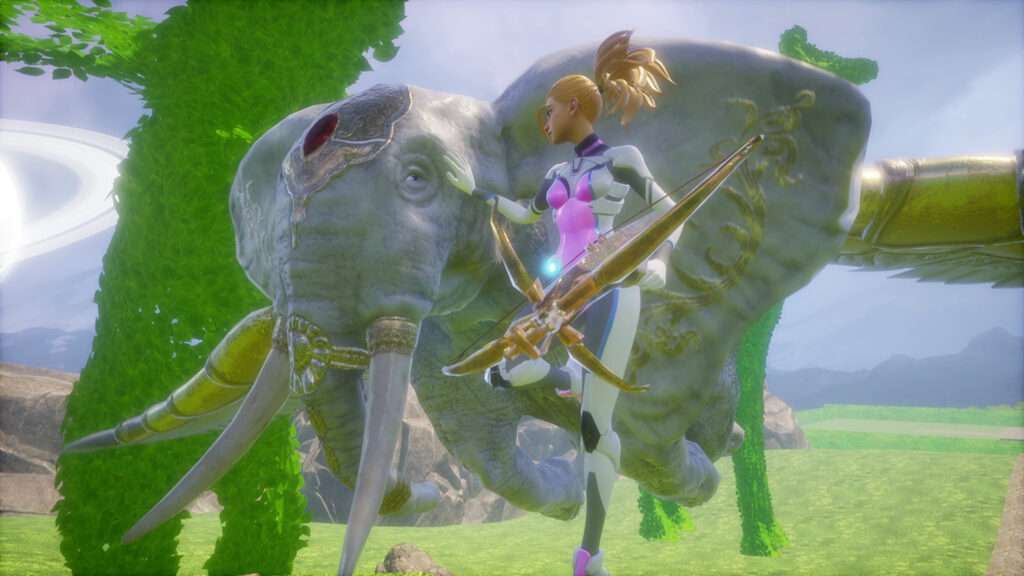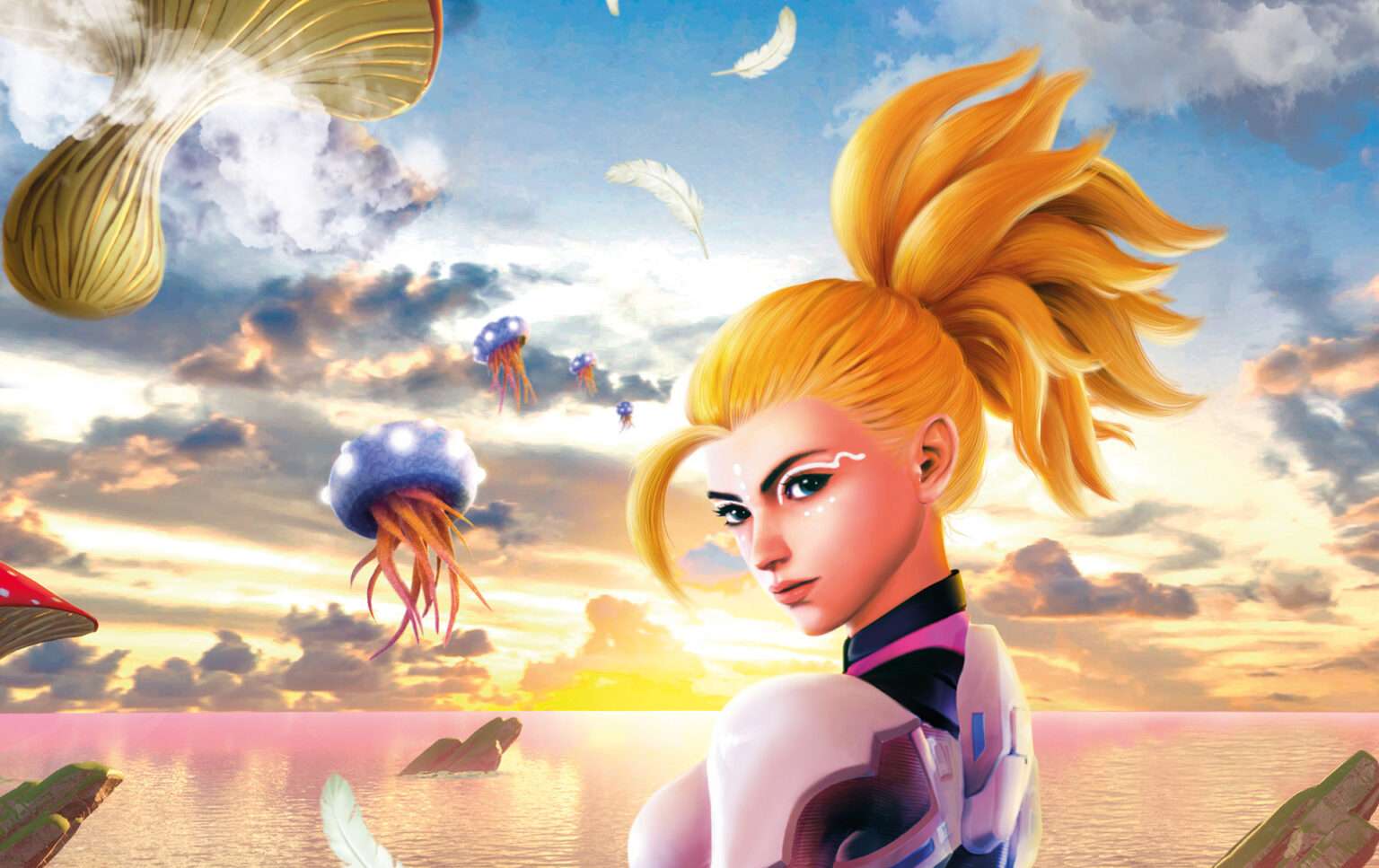This Air Twister review is made based on the Switch version with a review key provided by the publisher. The game is also available on PC, Xbox and Playstation consoles. The game costs €/$ 24,99.
Yu Suzuki’s legacy in the gaming industry is undeniable. Over his 25-year tenure at Sega, he began as a programmer and ascended the Sega ranks from producer to head of in-house studio AM2. His catalog includes iconic titles like Space Harrier, After Burner, Virtua Racing, Daytona USA, and, of course, the Shenmue series. As a producer, he played a crucial role in the development of all Sega hardware as well during his years at the Shinagawa-based gaming giant. In 2008, he left Sega to start his own studio, Ys Net.

Ys Net
The maiden release from the new studio was the long-awaited 2nd sequel to the Shenmue series. While its Kickstarter campaign set records by reaching its $2 million goal in just seven minutes, the eventual total reached an impressive $6.7 million. Despite receiving mixed reviews, the game resonated well with most franchise fans, although younger gamers and newcomers to the series found it to be an average and a bit dated experience. Following this, Yu and the team released several Shenmue tie-ins.
Air Twister, the first original non-Shenmue game from the studio, initially debuted as a mobile only experience with an exclusive deal on Apple Arcade. Now, a year later, the exclusivity ended, and the game is released on modern consoles with the assistance of publisher ININ Games.
Rail Shooter Lineage
The game is a rail shooter with a direct lineage to Yu Suzuki’s Space Harrier. In fact, it originated as a 3D Space Harrier mobile concept game. While Suzuki-san refrains from officially branding it as a spiritual successor, the resemblance to Space Harrier is undeniably striking. Point of view, enemy movement and waves, the way projectiles behave, are all directly correlated to Space Harrier.
YsNet did evolve the gameplay in Air Twister to a certain extent. The new lock-on mechanism introduces a crucial layer of strategy, enabling players to target multiple enemies simultaneously. This addition builds upon the basic Space Harrier principles and brings a much-needed tactical dimension to the game. Players can lock on to a number of enemies at once, causing their projectiles to home in on the targeted enemies.
Graphically challenged
The game, visually has more in common with that other genre classic, Panzer Dragoon. But I have to say that Air Twister adds quite a bit of variety. Every stage has very distinctive setting, enemies, and bosses. The stage vary from Panzer Dragoon-like water scapes, to space and off planet decors, and to a Alice in Wonderland like supersized garden. Although it is creative, the actual graphics are a bit inconsistent. While some farscapes and enemies are visually impressive, others look quite dated. Additionally, the cutscenes are even more dated and give of a PS2-era vibe, with very static and stiff CGI. The lack of sound effects in the cutscenes doesn’t set the mood very convincingly either.

Valensia
While we’re on the subject, the game features a prominently scored soundtrack by Dutch producer and artist Valensia. Being Dutch myself, I can affirm that the artist is fairly well-known (with anyone above 45) in the Netherlands for his hit song “Gaia” and is recognized as a musical innovator of some sort. His distinct influences from Kate Bush and Queen are unmistakably present in the work he produced for Air Twister’s OST. Valensia was huge in Japan for a short period, and apparently, Suzuki-san is a big fan. He tracked down Valensia to involve him in the project. The end result certainly has some charm, but at the same time, it feels somewhat disconnected from the video game. The lack of texture in sound effects and environmental audio in the game doesn’t help bridge this gap. The main theme, heard in most levels, evokes the idea it is a reworked version of “Gaia,” while the other tracks are strongly influenced by either Queen or Kate Bush. This is all fine and dandy, well-produced, but does feels out of place in the context of the game.

Powerups
The main story mode is de backbone of the game. The story mode lets you go through the game with a couple of continues and allows you to utilize the points you’ve collected to unlock additional live hearts, cosmetics and even new features and modes. The unlock-tree is extremely convoluted with an enormous amount of unlockable items and branching trees. There are is so many unlockables, with such a low cost, that it can literally take you a good couple of minutes to spend all your gained coin after a story mode run.
Doing so has major advantages, though. It provides you with various perks, buffs, and extra hearts that significantly ease your life on the battlefield. That said, the game starts off fairly easy but gradually becomes very challenging, eventually hitting a difficulty wall. The extra life hearts, in particular, will prove invaluable in helping you overcome these difficulty walls.
Game modes
We already covered all the modes in the pre-release article, but the gameplay does get a bit shaken up with some of these modes and mini games. In the “Starburst” mode, you play through waves of enemies similar to the game’s bonus stages. The “Fluffy” mode changes the perspective to 2.5D, utilizing the game engine and assets for an obstacle course collect-a-thon. The modes and features do much to beef up the longevity of the game undoubtedly, but most them stick to the core gameplay loop.
Conclusion
When considering the complete package, the gameplay falls a bit short to deliver a truly convinced arcady console experience. The somewhat shallow gameplay loop, rooted in its mobile gaming origins, still shows through. While additional content helps, the combination of occasional chaotic and unhinged stages in the later part of the game and music that seems to be completely detached from the game it is part of, just feels a bit messy. It is hard to fully recommend what is offered. Nevertheless, the core gameplay, unlockables, and extra modes do provide enough fun and depth to keep you busy for a while. Despite it is a somewhat messy production values. Certainly, genre fans will get their fix. Players that didn’t experienced the height of the rail shooter in the Playstation and Saturn era, will probably be weirded-out.
Pros:
+ Solid core gameplay
+ Some creative bosses and level design
+ Lots of unlockables
+ Loaded with additional modes and content
+ Well produced Valensia soundtrack
Cons:
- Messy presentation and cut scenes
- Graphically are somewhat dated
- Gameplay loop has its limits
- Soundtrack feels detached from the game


